The Born Rule: Connecting Quantum Mechanics and Observable Outcomes
Concept Map
The Born Rule, formulated by Max Born, is a fundamental principle in quantum mechanics that relates the wave function of a system to the probability of finding a particle in a particular state. It is crucial for understanding quantum phenomena and has applications in quantum computing, cryptography, and precision measurement. The rule's mathematical expression, principles, and impact on technology highlight its significance in both theoretical and practical aspects of quantum physics.
Summary
Outline
The Born Rule: A Cornerstone of Quantum Mechanics
The Born Rule, introduced by physicist Max Born in 1926, is a cornerstone of quantum mechanics that connects the theory's probabilistic nature with the deterministic outcomes we observe. It states that the probability of obtaining a particular measurement result, or eigenvalue, from a quantum system is given by the square of the magnitude of the system's wave function projected onto the corresponding eigenvector. Mathematically, this is expressed as \( P = |\langle \phi | \psi \rangle|^2 \), where \( \phi \) represents the eigenvector associated with the measurement outcome and \( \psi \) is the wave function of the quantum system. This rule was a pivotal development in quantum mechanics, providing a predictive framework for the outcomes of measurements on quantum systems.Essential Quantum Mechanics Concepts
A solid understanding of the Born Rule requires familiarity with several fundamental concepts in quantum mechanics. The wave function, denoted by \( \Psi \), describes the quantum state of a particle or system and contains all probabilistic information about the system. The state vector, also known as a ket vector, is an abstract representation of the quantum state in Hilbert space, a complex vector space. Eigenvalues are special values that result from the application of a linear operator to an eigenvector, which itself is a vector that remains unchanged in direction under that linear operation. These concepts are integral to the application of the Born Rule and the interpretation of quantum phenomena.Principles Underpinning the Born Rule
The Born Rule's application is underpinned by several key principles. The principle of superposition states that a quantum system can exist in multiple states simultaneously until measured. The principle of completeness asserts that the set of all possible measurement outcomes is exhaustive, ensuring that the probabilities of all potential outcomes sum to one. The principle of projective measurement indicates that quantum measurements can be represented by projection operators acting on the state vector. Lastly, the principle of continuity suggests that small changes in the quantum state or measurement operators should result in small changes in the probabilities. These principles ensure the Born Rule's consistency and reliability in predicting the outcomes of quantum measurements.Mathematical Expression and Interpretation of the Born Rule
The mathematical expression of the Born Rule is both simple and profound. It calculates the probability \( P(a) \) of observing a particular outcome \( a \) as the square of the amplitude of the wave function projected onto the eigenvector associated with that outcome, expressed as \( P(a) = |\langle \phi_a | \psi \rangle|^2 \). This approach differs from classical mechanics by incorporating quantum principles such as superposition and wave-particle duality. The Born Rule also implies the collapse of the wave function upon measurement, a postulate that describes the transition from a superposition of states to a single observed state. Through the Born Rule, quantum mechanics adopts a statistical interpretation, where wave functions are translated into probabilities of observable events.The Born Rule in Quantum Technology Applications
The Born Rule has significant practical applications in the burgeoning field of quantum technologies. In quantum computing, it is used to predict the probabilities of different outcomes when measuring qubits, which is essential for the development of quantum algorithms like Shor's algorithm for factoring and Grover's algorithm for database searching. Quantum key distribution (QKD) relies on the Born Rule to assess the security of cryptographic keys by calculating the likelihood of an eavesdropper's presence. In quantum metrology, the rule is used to predict measurement outcomes with high precision, improving the accuracy of scientific instruments. These applications underscore the Born Rule's critical role in the advancement of quantum technology and research.Impact of the Born Rule on Physics and Technology
The influence of the Born Rule extends well beyond the realm of quantum mechanics, affecting various scientific and technological domains. It is indispensable for calculating the probabilities of particle interactions in quantum field theory (QFT), for understanding electron transitions in atomic and molecular physics, and for interpreting quantum effects in cosmological models. The Born Rule also underlies technologies that have become integral to our daily lives, such as magnetic resonance imaging (MRI) in medical diagnostics, lasers and semiconductors in communication devices, and nanoscale transistors in electronic circuits. The Born Rule thus plays a pivotal role in both the theoretical framework and practical applications of quantum phenomena in contemporary science and technology.Concluding Insights on the Born Rule in Quantum Physics
In conclusion, the Born Rule is a fundamental aspect of quantum physics, essential for predicting the probabilities of measurement outcomes in quantum systems. It is based on the interplay of wave functions, state vectors, eigenvalues, and eigenvectors, and is governed by principles such as superposition, completeness, projective measurement, and continuity. The rule's practical significance is evident in its applications across quantum computing, secure communication, and precision measurement, as well as in everyday technologies. As a vital link between quantum theory and observable phenomena, the Born Rule continues to be an indispensable tool for physicists and engineers, shaping our comprehension of the quantum world and its myriad applications.Show More
Introduction to the Born Rule
Definition of the Born Rule
The Born Rule is a fundamental principle in quantum mechanics that relates the probabilistic nature of the theory to the deterministic outcomes observed in measurements
Historical Background
Introduction of the Born Rule by Max Born
Physicist Max Born first introduced the Born Rule in 1926 as a way to connect the probabilistic nature of quantum mechanics with the deterministic outcomes observed in measurements
Significance of the Born Rule in Quantum Mechanics
The Born Rule was a pivotal development in quantum mechanics, providing a predictive framework for the outcomes of measurements on quantum systems
Fundamental Concepts in Quantum Mechanics
Wave Function
The wave function, denoted by \( \Psi \), describes the quantum state of a particle or system and contains all probabilistic information about the system
State Vector
The state vector, also known as a ket vector, is an abstract representation of the quantum state in Hilbert space, a complex vector space
Eigenvalues and Eigenvectors
Eigenvalues are special values that result from the application of a linear operator to an eigenvector, which itself is a vector that remains unchanged in direction under that linear operation
Principles Underlying the Born Rule
Principle of Superposition
The principle of superposition states that a quantum system can exist in multiple states simultaneously until measured
Principle of Completeness
The principle of completeness asserts that the set of all possible measurement outcomes is exhaustive, ensuring that the probabilities of all potential outcomes sum to one
Principle of Projective Measurement
The principle of projective measurement indicates that quantum measurements can be represented by projection operators acting on the state vector
Principle of Continuity
The principle of continuity suggests that small changes in the quantum state or measurement operators should result in small changes in the probabilities, ensuring the consistency and reliability of the Born Rule
Mathematical Expression and Implications of the Born Rule
Mathematical Expression
The Born Rule is expressed mathematically as \( P = |\langle \phi | \psi \rangle|^2 \), where \( \phi \) represents the eigenvector associated with the measurement outcome and \( \psi \) is the wave function of the quantum system
Differences from Classical Mechanics
The Born Rule differs from classical mechanics by incorporating quantum principles such as superposition and wave-particle duality
Collapse of the Wave Function
The Born Rule implies the collapse of the wave function upon measurement, a postulate that describes the transition from a superposition of states to a single observed state
Statistical Interpretation
Through the Born Rule, quantum mechanics adopts a statistical interpretation, where wave functions are translated into probabilities of observable events
Applications of the Born Rule
Quantum Computing
The Born Rule is used in quantum computing to predict the probabilities of different outcomes when measuring qubits, which is essential for the development of quantum algorithms
Quantum Key Distribution
Quantum key distribution (QKD) relies on the Born Rule to assess the security of cryptographic keys by calculating the likelihood of an eavesdropper's presence
Quantum Metrology
In quantum metrology, the Born Rule is used to predict measurement outcomes with high precision, improving the accuracy of scientific instruments
Influence on Other Scientific and Technological Domains
The Born Rule has significant implications in various fields such as quantum field theory, atomic and molecular physics, and cosmology, and underlies technologies such as MRI, lasers, and nanoscale transistors





